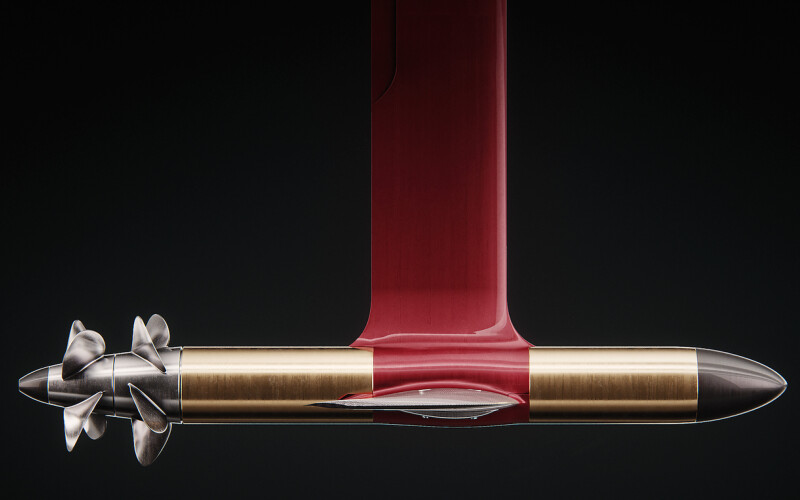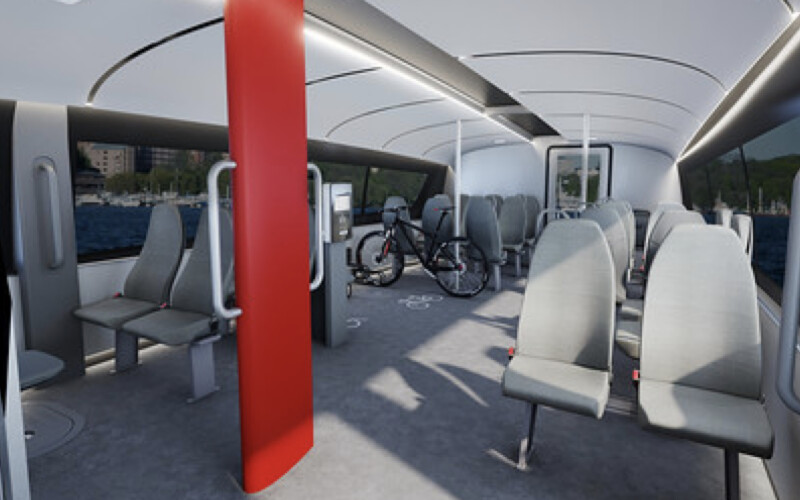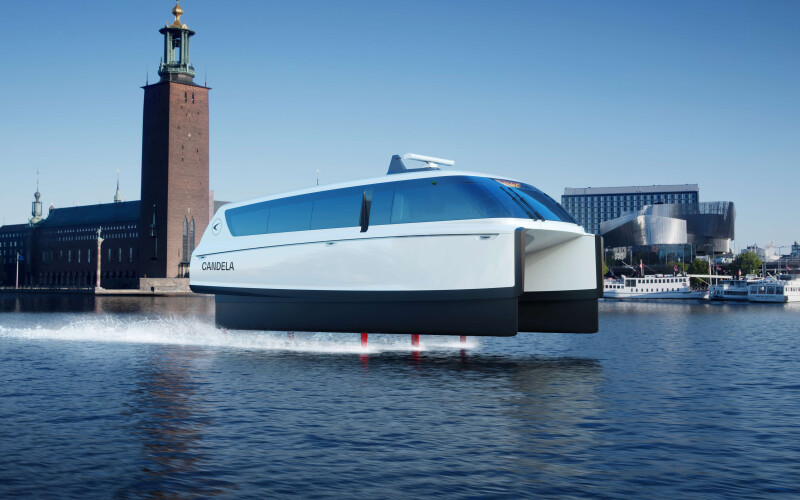Waterborne transportation periodically gets redefined. In the 1930s, the use of the automobile meant that narrow, sharp-ended ferries designed to lie broadside to a dock would not work; thus broader, sharp-ended ferries with a deck to carry cars began appearing.
Nearly 100 years later, ferries just might be on the cusp of another transition. The issue is how to reduce greenhouse gas emissions by developing cleaner power options.
How about a ferry with zero emissions that’s capable of 30-knots (34.5 mph) yet is billed as quiet and smooth running? What’s not to like about a ferry with those attributes? They describe the P-12 Shuttle as a 100% carbon-fiber, 39'×14.7' catamaran ferry that’s 100% electric powered. The P-12 is designed by Candela Marine Tech, which builds high-tech electric boats in Stockholm, Sweden. Propulsion comes from two Candela C-POD 50-kW electric pod drives mounted on the aft hydrofoils.
“It’s anticipated the first P-12 will be launched in September,” said Michael Mahlberg, Candela’s head of public relations in Stockholm. After a testing period, the new ferry will enter Stockholm’s public transportation fleet. Though the first P-12 has yet to hit the water, Candela is already promoting the ferry as “the world’s fastest electric passenger vessel.” At maximum speed or less, the P-12 will carry 30-seated passengers, one captain, and wheelchairs and bikes.

FIRST ELECTRIC HYDROFOIL
It’s not the speed that sets the P-12 apart from other ferries; it’s the hydrofoil system. The system lifts the hull out of and above the water. “It’s the first major electro-hydrofoil boat,” said Mahlberg. The P-12 can be operated as a planing catamaran, but in hydrofoil mode, energy and service costs can be reduced by 90%, and CO2 output can be reduced by 97.5% compared with a traditional fossil-fuel ferry, according to the Candela website. Even when comparing the P-12 Shuttle to a hybrid-electric bus, Candela has a “90% reduced fuel cost” when operating at 25 knots.
In the hydrofoil mode you won’t be able to ignore the Candela P-12 ferry as it cuts across a harbor or along a nearby coastline. When traveling at speeds up to 30 knots, the twin hulls are “above the water by about four feet,” said Mahlberg, supported by what looks like, to the uninitiated, five red poles, leaving behind very little wake. The wake is mostly spray. Beneath the surface, the poles are matched up with three carbon-fiber wing-profiled hydrofoils, with a large, straight main foil near the center of gravity and two smaller T-foils aft, each having a Candela C-Pod electric drive with a contra-rotating propeller. That and the hydrofoils lift and propel the 8.5-ton, 39' P-12 Shuttle above the water, all the while decreasing its drag. There’s no engine box below deck with shafts, bearings, and gears, and placing the electric motors underwater avoids potential problems with heat. Another benefit is silence. There is no ear-shattering 90- to 100-decibel outboards when you jack up the P-12’s power.
Hydrofoils function like airplane wings. As the water flows over the foil, the interaction between water and foil creates an upward force, lifting the boat out of the water. The foils are retractable for tying up to a dock, storage, shallow water operation or when using the P-12 as a planing catamaran. The electric motors are designed to last 3,000 hours without being serviced. Using 80% less energy than traditional vessels, the P-12’s batteries should have a 60-nautical mile range on a single charge, while cruising at 27 knots. Three hours of operation is possible before charging is needed. Top speed is 30 knots and there’s no need for oil changes.
Sea sickness shouldn’t be an issue with the Candela hydrofoil system. It’s controlled by the Candela flight controller, which uses 10 sensors around the hull’s perimeter to automatically stabilize the ferry by measuring wave heights, roll and pitch and forces occurring in a sharp turn. Using those measurements, the flight controller can adjust the hydrofoils position up to 100 times per second to create a steady, smooth ride. Because there’s almost no wake, the P-12 Shuttle — even though the first one hasn’t been launched — has already been granted an exemption from Stockholm’s 12-knot-speed limit, allowing it to travel at higher-than-normal speeds into the city’s center, based on the idea it won’t affect other boats or sensitive shorelines.

The electric hydrofoils make life easier for passengers and operators. Eliminating the combustion engine “is a major benefit to the climate,” according to the Candela website, quoting a cycle analysis by Stockholm’s Royal Institute of Technology that concluded “a P-12 ferry will emit 97.5% less carbon dioxide over its lifetime compared to a diesel vessel of the same size, including its emissions from production, operations over 30 years, and recycling.”
Last year, Candela opened an office in Sausalito, Calif., which the company bills as its “first test-drive center” in the U.S. Veronica Cargay, project manager for Candela Marine, said in an interview with ABC7 News in San Francisco, that after the P-12 Shuttle is launched and tested later this year she hopes “that it’ll be in the Bay Area.” She noted that while the traditional ferry takes 30 minutes to go from Sausalito to San Francisco, the run will be able to be made “in half that time with an electric ferry. Its mission is to help accelerate the transition to fossil-fuel-free waterways.”
Cargay said that being just under 40' creates the potential for increasing the frequency of ferry runs and having greater design flexibility. “You can stop using large heavy ferries and move to fleets of small, nimble craft.”




